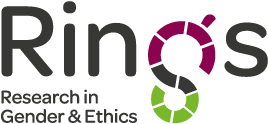Amplifying the voices of marginalized groups: What does intersectionality lens add?
By Sabrina Rasheed and Aazia Hossain
Universal health coverage (UHC), is a top priority for the Government of Bangladesh. If universal health coverage is achieved, everyone would have access to quality healthcare services without any hardships. However, although Bangladesh has an extensive rural public healthcare infrastructure throughout the country, challenges still persist in the access and use of health services especially for marginalized groups such as adolescent women and poor working mothers.
To ensure the inclusion of marginalized groups in primary healthcare Bangladesh government has spelled out specific policies. To cite an example at the community clinics (CC), the frontline primary health care facilities, Community Support Groups (CSG) are convened to support CC services. The CSGs consist of local government leaders, community leaders and members of specific interest groups such as poor, women and adolescents. Due to the Government of Bangladesh’s prioritization of marginalized groups, representation of the poor, female and adolescents are mandatory in these CSGs.
icddr,b initiated a study in rural Chakaria sub-district of Bangladesh to activate these CSGs to strengthen community participation. Within the larger study supported by Future Health Systems and RinGs we used the intersectionality lens to understand the nature of the barriers faced by poor working women and adolescent females in accessing the CC services. In addition we also wanted to understand how the representatives of working women and adolescents in CSGs help to get their voices heard in the delivery of CC services.
Health needs
From the community end we found that the services offered by the CCs in many cases did not meet many of the health needs of the adolescents (reproductive health) or working women (acute health problems, and occupational health) although availability of free medication was appreciated. Adolescent mothers lacked awareness of CC services and their access to healthcare were mediated through the household decision makers which made it hard for them to utilize CC services as it exists. For the working women the operational hours of the CC which coincided with their work hour and were therefore inconvenient. Women in the rural areas are mostly day laborers and going to the clinic means that they have to miss a day’s work. This prevents them from seeking primary care. When acute health problems occur, mothers did not feel that CCs provided adequate service.
Representation
Both these marginalized groups – adolescents and working women – are not aware of their representation in the CSG. In the CSG group the members who represent adolescents and women were often chosen quite arbitrarily. They are family members of the political or social leaders. This becomes an issue in case of adolescent members of CSG group. During the CSG meetings the adolescent did not feel that she can voice her opinion. The presence of elders in the meeting creates a barrier for the adolescents to ask questions or express opinions. Although we already knew that adolescents and working women lacked access to primary health care, the use of intersectionality lens allowed us to understand the nuances of the marginalization.
If the voices of the marginalized groups are to be taken into account as mandated in the policy, then the roles and responsibilities of their representatives in the CSG group need to be made real. The adolescent and women members must be supported so that the voice of their groups can be brought forward to make primary healthcare more accessible. The use of intersectionality lens therefore, has a potential to contribute to the achievement of UHC.
